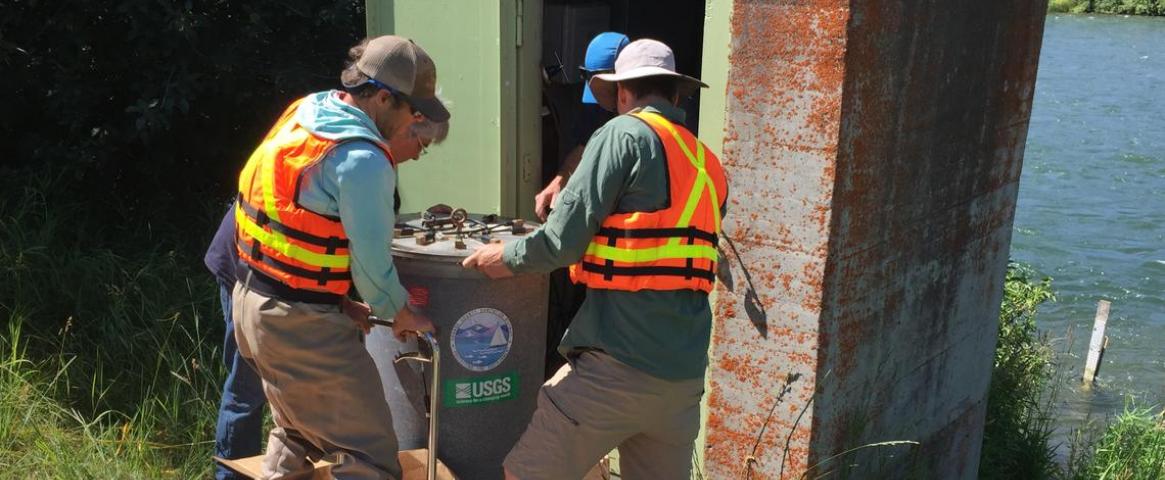By Sierra Cistone
Animals leave behind countless pieces of DNA in a single cup of lake water after swimming and living in the water during the weeks prior.
This environmental DNA, or eDNA is the byproduct of feces, mucus, hair, skin, decomposing bodies and other cells left by animals. Advancements in how eDNA clues are used are opening the door for wildlife biologists to better study and preserve biodiversity.
Like microscopic clues, eDNA can be collected and processed in a lab to help scientists learn which species are present. Invasive, native, rare, and endangered species can all be detected, which can help researchers and conservationists alike. In the Rocky Mountains of Montana, researchers from the U.S. Forest Service collect DNA from wolverine tracks left in the snow to learn how many individual wolverines are there, and even if they are male or female.
These eDNA clues also flow down streams and rivers and can be collected to see what animals are present upstream. Researchers from the U.S. Geological Survey have installed sampling robots in rivers in Idaho, Montana, and Wyoming to collect the eDNA. The robots will collect more than 100 samples over the course of a few months, helping biologists monitor invasive species.
Traditional methods for biodiversity and species monitoring include using remote-sensing cameras, capturing and actively searching for animals. Using eDNA however, is non-invasive and requires less time and human resources than other methods.
While the technique and technology has been around for many decades, researchers are reporting an innovation boom in the ways eDNA is being used. One of the first eDNA studies for wildlife conservation was published in Biology Letters in 2008. The researchers used eDNA from water samples in France to successfully identify the presence of invasive American bullfrogs.
Like many other invasive species, American bullfrogs have decimated populations of native wildlife in places where they are introduced, but seasons, weather, life stages and environmental factors can make it difficult to detect them. Without a quick and accurate way to detect invasive species, their impacts on the ecosystem can become severe.
Caren Goldberg, an associate professor at Washington State University, was studying amphibian genetics for her Ph.D. in 2008 and remembers her excitement when that paper was published. “The idea that you could detect an animal from the water it was sitting in was so far out,” Goldberg said. “I just remember thinking, ‘This is going to change everything, everything that we do, if it is successful.’”
Since then, the number of new eDNA studies has grown exponentially, Goldberg said, resulting in the creation of a new scientific journal called Environmental DNA. The journal was started in 2019 and has since published over 100 research articles, and an entire issue dedicated to eDNA application for biodiversity monitoring and conservation.
As a tool, eDNA remains relatively new and many researchers are still trying to answer questions around best practices, protocol and environmental limitations.
According to researchers, one of the main limitations has been that a single eDNA detection of a species does not always mean that the animal was present. For example, environmental DNA can be moved around from one water source to another on the shoes of people and the gear of biologists, while fish-eating birds can carry the eDNA of their prey in their stomachs. Subsequently, scientists could find the eDNA of a fish in a lake, even if it was only the byproduct of a bird’s recent meal.
Researchers agree that accurate data is best achieved by collecting multiple samples over a longer period of time. New innovations like the U.S. Geological Survey’s sampling robots in rivers can help to make that possible.
There are some important questions about eDNA research that still need answers, according to Chris Jerde, a research scientist at the Marine Sciences Institute at the University of California Santa Barbara. Protocols and uses for eDNA research may vary for different species or in different environments, Jerde said.
Best practices for eDNA may change as research grows, but innovation is essential, according to Jerde. “... there's a lot of very critical species out there that really could use a little bit of ingenuity, at some novel application,” Jerde said, “even if it's not perfect.”
Sierra Cistone is a graduate student in the University of Montana’s Environmental Science and Natural Resource Journalism program. She is a freelance writer and photographer and her work has been published in the Guardian, Explore Big Sky, and Bozeman Magazine. Her writing and photography can be found on her website sierracistone.com.
This story was produced as part of NASW's David Perlman Summer Mentoring Program, which was launched in 2020 by our Education Committee. Cistone was mentored by Shel Evergreen.
Main image: USGS employees install a eDNA robot stream sampler in Irwin, Idaho. Credit: Cheryl Eddy Miller, USGS WY-MT WSC. Public domain.


